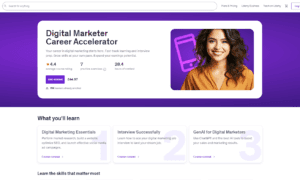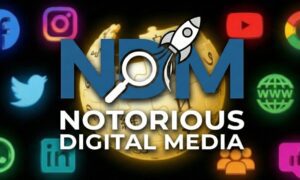Content marketing has become a cornerstone of successful business strategies. However, with so much competition, standing out requires more than just creating great content—it demands a strategic approach. One of the most effective yet often overlooked methods is leveraging guest blogging to build a content marketing funnel. This approach not only boosts your brand’s visibility but also drives targeted traffic, generates leads, and nurtures relationships with your audience.
What is a Content Marketing Funnel?
Before diving into the specifics of guest blogging, it’s essential to understand what a content marketing funnel is. A content marketing funnel is a framework that guides potential customers through different stages of their journey—from awareness to consideration and, ultimately, to conversion.
At the top of the funnel, the goal is to attract a wide audience and create awareness about your brand. In the middle, you nurture these leads by providing valuable content that addresses their pain points. Finally, at the bottom of the funnel, you convert these leads into paying customers through targeted offers and calls to action.
Guest blogging fits seamlessly into this framework, acting as a powerful tool to attract and engage your target audience at every stage.
Why Guest Blogging is a Game-Changer for Content Marketing
Guest blogging offers numerous benefits that make it an ideal strategy for building a content marketing funnel. First, it allows you to tap into an established audience. By contributing to reputable blogs in your niche, you gain access to their readership, which can significantly expand your reach.
Second, guest blogging builds credibility and authority. When your content appears on trusted platforms, it enhances your brand’s reputation and positions you as an expert in your field.
Lastly, guest blogging drives high-quality traffic to your website. By including strategic links in your guest posts, you can direct readers to your own content, products, or services, effectively guiding them through your funnel.
Identify Your Target Audience and Goals
The first step in creating a content marketing funnel through guest blogging is to clearly define your target audience and goals. Without a clear understanding of who you’re trying to reach and what you want to achieve, your efforts may fall flat.
Start by creating detailed buyer personas that outline your ideal customers’ demographics, interests, and pain points. This will help you tailor your guest blogging strategy to resonate with your audience.
Next, set specific goals for your guest blogging efforts. Are you looking to increase brand awareness, generate leads, or drive sales? Having clear objectives will guide your content creation and ensure your efforts align with your overall marketing strategy.
Find the Right Blogs to Contribute To
Not all blogs are created equal. To maximize the impact of your guest blogging efforts, you need to identify platforms that align with your niche and target audience.
Begin by researching blogs that cater to your industry. Look for sites with a strong domain authority, engaged readership, and high-quality content. Tools like Ahrefs or SEMrush can help you evaluate a blog’s traffic and backlink profile.
Additionally, consider the blog’s audience demographics. Does their readership match your buyer personas? Contributing to blogs that attract your ideal customers will ensure your guest posts reach the right people.
Craft High-Quality, Value-Driven Content
Once you’ve identified the right blogs, the next step is to create content that resonates with their audience. Remember, the goal of guest blogging is not just to promote your brand but to provide genuine value to readers. Start by understanding the blog’s tone, style, and content preferences. This will help you tailor your writing to fit seamlessly with their existing content.
Focus on addressing your audience’s pain points and offering actionable solutions. For example, if you’re in the fitness industry, you could write a guest post on “5 Effective Workouts for Busy Professionals.” This type of content not only engages readers but also positions you as a trusted authority.
Include Strategic Calls to Action
While your primary goal is to provide value, it’s also important to guide readers toward the next step in your funnel. This is where strategic calls to action (CTAs) come into play.
At the end of your guest post, include a CTA that encourages readers to take action. For instance, you could invite them to download a free eBook, sign up for a webinar, or visit your website for more resources.
Make sure your CTAs are relevant to the content of your guest post. If your post is about productivity tips, for example, your CTA could lead to a free productivity toolkit. This ensures a smooth transition from the guest blog to your own content.
Promote Your Guest Posts
Publishing a guest post is just the beginning. To maximize its impact, you need to actively promote it. Share your guest post on your social media channels, email newsletters, and other marketing platforms.
Additionally, engage with readers who comment on your guest post. Respond to their questions, thank them for their feedback, and continue the conversation. This not only builds relationships but also drives more traffic to your content.
Nurture Leads Through Your Funnel
Once you’ve attracted visitors through your guest posts, the next step is to nurture them through your content marketing funnel. Use the leads generated from your guest blogging efforts to create targeted email campaigns, retargeting ads, and personalized content.
For example, if a reader downloads your free eBook after clicking a CTA in your guest post, follow up with a series of emails that provide additional value and guide them toward a purchase.
Measure and Optimize Your Strategy
Finally, it’s crucial to track the performance of your guest blogging efforts and make data-driven improvements. Use analytics tools to monitor metrics such as traffic, engagement, and conversions.
Identify which guest posts are driving the most results and focus on contributing to similar blogs. Additionally, experiment with different types of content, CTAs, and promotion strategies to see what works best for your audience.
Conclusion
Guest blogging is a powerful tool for creating a content marketing funnel that attracts, engages, and converts your target audience. By following the steps outlined in this article, you can leverage guest blogging to build brand awareness, generate leads, and drive sales.
Remember, the key to success lies in providing genuine value, targeting the right audience, and continuously optimizing your strategy. With a well-executed guest blogging plan, you can take your content marketing efforts to the next level and achieve your business goals.
So, what are you waiting for? Start identifying blogs, crafting compelling content, and building your content marketing funnel through guest blogging today!



































